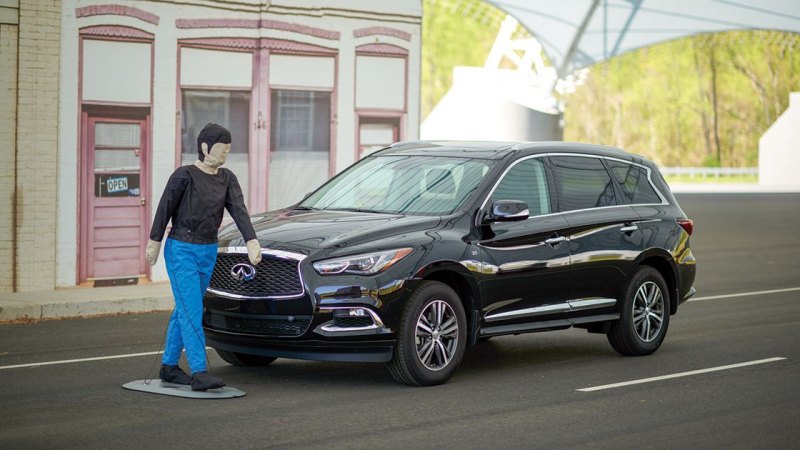Traffic safety officials, under pressure to do something amount the mounting epidemic of pedestrian deaths, are making some tentative first moves to force carmakers to prioritize safety for those on foot.
The Insurance Institute for Highway Safety announced it would begin testing pedestrian-detection systems and assigning ratings to vehicles based on their performance. The group hopes to encourage automakers to make such equipment standard, which could reduce crashes as much as 35 percent.
Unfortunately, it appears the group is ignoring the elephant in the room: The rise of SUVs, whose design itself is contributing to soaring pedestrians deaths. Indeed, the IIHS testing does not look at the impact of bumper height or shape or vehicle weight on pedestrians in crashes — but merely assesses the pedestrian-detection technology. In other words, even the leading traffic safety groups are not willing to warn the public about the inherent dangers of SUVs to pedestrians.
Of the 12 vehicles tested, four ended up being ranked "Superior" in the detection tests. Three are SUVs, even though SUVs are two-and-a-half to three times more likely to kill pedestrians than sedans, according to the National Highway Traffic Safety Administration.
A spokesman for IIHS said the pedestrian-detection technology is the greatest hope for saving the lives of the innocent because, alas, "SUVs and pickups are not going away."
"IIHS has taken the position that technology is the most realistic way to reduce pedestrian risk from the vehicle side," said the spokesman, Russ Rider.
The new ratings will be part of the IIHS's "Top Safety Pick" rankings next year, which Automotive News calls a "highly coveted" distinction.
About a third of 2019 vehicles include the pedestrian-detection systems, which deploy sensors that apply the brakes automatically if they detect people. Another third of cars offered the system as an option. The IIHS says it reduced pedestrian crashes 35 percent on vehicles that have the system. The agency estimates it would reduce pedestrian crashes 65 percent if it were widely deployed and improved.
Meanwhile, there's been no decisive action from the National Highway Traffic Safety Administration, the federal agency responsible for regulating vehicle safety on protecting pedestrians. Some rules were proposed late in the Obama Administration that would have begun to phase in pedestrian safety impacts, but those rules have not moved forward under President Trump's anti-regulatory Transportation Department.
Pedestrian deaths have increased almost 50 percent since 2009, which many advocates see as a national health emergency.






